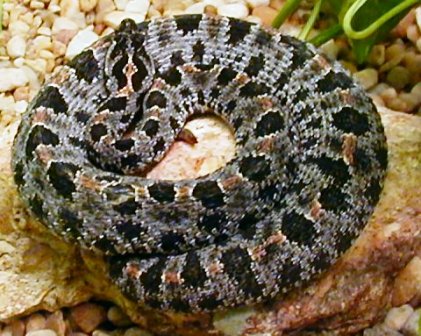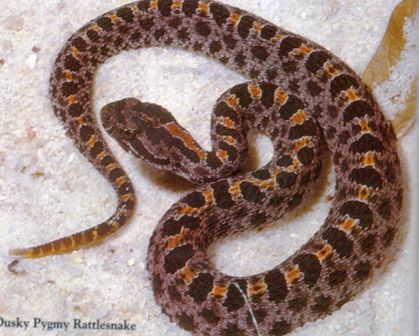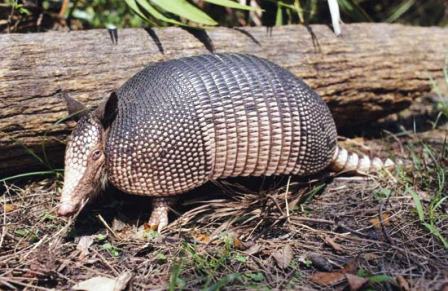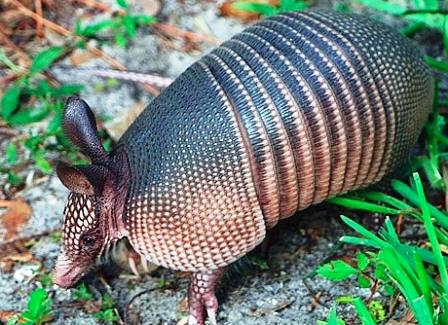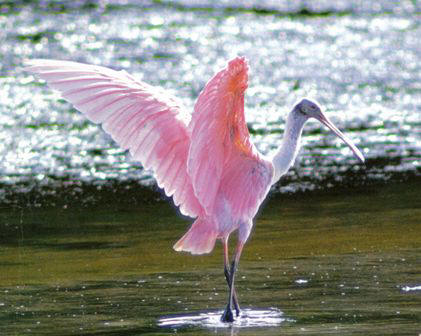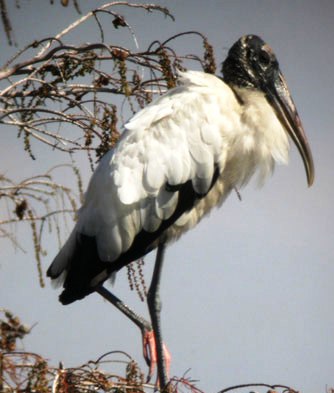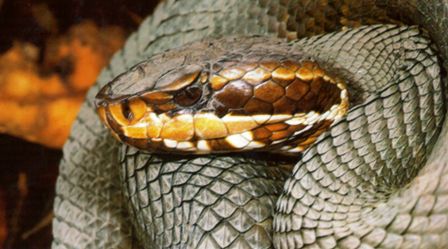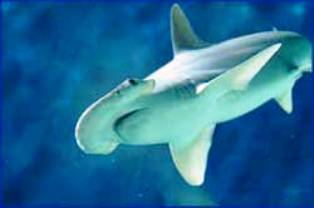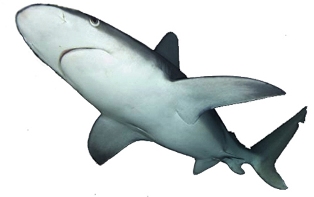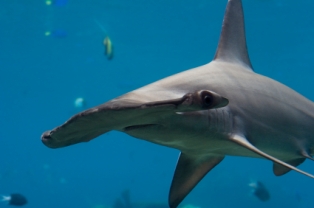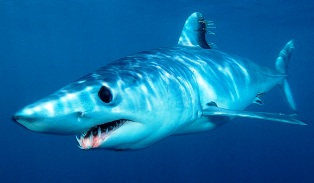Thursday, July 30, 2015
Dusky Pygmy Rattlesnake
Everyone in Floridian nature is aware of most of the deadly snakes that inhabit our land and water but many forget about the smallest deadly snake in Florida, the dusky pygmy rattlesnake. The Feisty little dusky pygmy rattler is rarely longer than twenty inches, and is common throughout the state of Florida. This small rattler lives in pine-palmetto flatwoods, scrub, and longleaf pine habitats that are not far from fresh water. The Dusky Pygmy Rattlesnake is a hot-tempered snake, usually striking repeatedly at the slightest threat. This pit vipers venom is very potent but the dose it delivers is small. Although the Pygmy Rattler vibrates its tail when annoyed, the little rattles are barely audible, sounding more like the faint buzz of an insect. This is all the more reason to be wary of this snake. Although its bite is unlikely to cause death, it can be very painful and can cause infection or tissue destruction.
The Dusky Pygmy rattle is made of of a substance called keratin, similar to human fingernails. At birth, a rattlesnake has only a single button at the end of its tail. As the snake grows, another loosely interlocking segment is added each time it sheds its skin. A healthy rattlesnake might shed its skin and add another rattle as often as four times a year, but the snake can also have a few or even all of the segments break off from time to time, so it is an unreliable marker for guessing the age of the rattlesnake. The rattles are probably a protective device to scare away predators.
Friday, July 24, 2015
Floridian Armadillos & Leprosy
The nine-banded armadillo, named for the nine breaks in the creature’s
leathery armor that allow it to flex its stiff hide, is an odd-looking
mammal about the size of a cat and ordinarily we do not think of armadillos being more of a problem than a pest who digs up our yard or roadkill laying along every highway in Florida but news this weeks tells us they may actually spread leprosy!
According to CBS news Florida has nine reported cases of leprosy across the state. Normally, the state health department says Florida sees only 10 cases in an entire year. Leprosy, a biblical disease that affects both the skin and nervous system is mostly found in areas like Africa, Brazil and India. Of the estimated two million people who suffered from leprosy world wide only about 294 cases were found in the entire United States last year.
Armadillos like forested or semi-open habitats with loose textured soil that allows them to dig easily. Armadillos tend to frequent the vicinity of streams and water holes, although they seem to avoid marshy areas. Tracks in the mud around small ponds give evidence that the armadillos visit them not only for purposes of drinking and feeding, but also to take mud baths.
With July being their mating season, armadillos are going to be very active. The main danger lies in their saliva which is believed how they spread the potentially deadly disease. Armadillos have a tendency to spit at predators as part of their defense system. In 1971, a captive armadillo developed leprosy 17 months after it was inoculated with the bacterium Mycobacterium leprae obtained from an infected human. Subsequently, armadillos have been used in further study of this disease.
Armadillos feed primarily on insects and their larvae. They also eat earthworms, scorpions, spiders, snails, and small vertebrates and their eggs. Reports of armadillo damage to birds' nests on the ground are rare. People cannot help but appreciate the fact that armadillos consume large amounts of armyworms, cockroaches, ants, wasps, flies, beetles, and grasshoppers.
According to CBS news Florida has nine reported cases of leprosy across the state. Normally, the state health department says Florida sees only 10 cases in an entire year. Leprosy, a biblical disease that affects both the skin and nervous system is mostly found in areas like Africa, Brazil and India. Of the estimated two million people who suffered from leprosy world wide only about 294 cases were found in the entire United States last year.
Armadillos like forested or semi-open habitats with loose textured soil that allows them to dig easily. Armadillos tend to frequent the vicinity of streams and water holes, although they seem to avoid marshy areas. Tracks in the mud around small ponds give evidence that the armadillos visit them not only for purposes of drinking and feeding, but also to take mud baths.
With July being their mating season, armadillos are going to be very active. The main danger lies in their saliva which is believed how they spread the potentially deadly disease. Armadillos have a tendency to spit at predators as part of their defense system. In 1971, a captive armadillo developed leprosy 17 months after it was inoculated with the bacterium Mycobacterium leprae obtained from an infected human. Subsequently, armadillos have been used in further study of this disease.
Armadillos feed primarily on insects and their larvae. They also eat earthworms, scorpions, spiders, snails, and small vertebrates and their eggs. Reports of armadillo damage to birds' nests on the ground are rare. People cannot help but appreciate the fact that armadillos consume large amounts of armyworms, cockroaches, ants, wasps, flies, beetles, and grasshoppers.
Thursday, July 16, 2015
Floridian Nature Spot of the Week: St. Joseph Pennisula State Park
If you are looking for a great place to enjoy Floridian nature, you should check out St. Joseph Peninsula State Park. Its miles of fine natural beach are good for swimming and fishing. With miles of white sugar sand, this park has one of the top rated beaches in the United States. Sunbathing, snorkeling, and swimming are popular activities along the Gulf of Mexico and St. Joseph Bay. Outdoor enthusiasts can enjoy camping, fishing, hiking, and bicycling. From offshore, canoeists and kayakers can take in a superb view of the high dunes and sand pine scrub. The fall is best for catching large redfish, sharks, bluefish, and flounder, while spring is excellent for pompano, whiting, and speckled trout.
Indians once inhabited the peninsula and gathered shellfish for meals from the bay's shallow waters. Before the area was purchased for development as a state park, it was used as a U.S. Army training facility during World War II.
Named for lifelong community leader and settler T.H. Stone, the park is teeming with wildlife and marine life. Noted as an excellent birding area with sitings of 209 species currently recorded, it is a premier location in the eastern United States for observing hawks during fall migration. Many species can be seen including the endangered peregrine falcon.
The monarch butterfly is also on the wing in autumn, making its long migratory journey from northern states to wintering sites in Mexico. Shore and wading birds are in abundance throughout the year.
The park offers picnicking, swimming, camping, saltwater fishing, boating and wilderness hiking in the park's 1,650-acre wilderness preserve. St. Joseph offers luxury, furnished cabins located on the bay side of the park. Each cabin is a two-story elevated building. They have open lofts with two double beds, a sleeper sofa and daybed. Each has an equipped kitchen, bathroom and living area. Linens and towels are given at the beginning of the visit. For extended visits, visitors are encouraged to bring extra towels. There are 119 campsites with water, electricity, picnic tables and grills.
Wednesday, July 8, 2015
Where are the Cedar Key Birds?
There is something amiss in Floridian nature and so far no one has any answers. Something strange has happened to the birds living on one of the islands off of Cedar key. They have suddenly all disappeared, all 15,000 of them!!! Brown pelicans, various herons and egrets, ibis, roseate spoonbills, cormorants, and countless other types of birds come every year to this small island to lay their eggs and wait for them to hatch. This year the birds came as usual but in just a few day's span all the birds abandond their nests and simply disappeared.
On April 20, the birds disappeared from Seahorse Key, a small island approximately four miles southwest of Cedar Key that has a mandated period where humans are not even allowed to visit the island so that the birds can nest in peace. It's part of the Cedar Keys National Wildlife Refuge, about 21 miles west northwest of Crystal River, established in 1929 as a sanctuary for birds devastated by decades of hunting for their colorful plumage. Accessible only by boat, today it's a rare island not dominated by human activity and development.
This strange abandonment by the birds is a great cause of concern and could have a ripple effect of causing problems for other wildlife on the island. For instance cottonmouth snakes eat bird predators like rodents, and in turn the
birds drop lots of fish and other nutrients from the trees to feed the
snakes.
"Any rookery that's persisted for decades as one of the largest colonies is incredibly important," said Janell Brush, an avian researcher with the Florida Fish and Wildlife Conservation Commission. "It's quite a large colony. There had to be some intense event that would drive all these birds away."
On April 20, the birds disappeared from Seahorse Key, a small island approximately four miles southwest of Cedar Key that has a mandated period where humans are not even allowed to visit the island so that the birds can nest in peace. It's part of the Cedar Keys National Wildlife Refuge, about 21 miles west northwest of Crystal River, established in 1929 as a sanctuary for birds devastated by decades of hunting for their colorful plumage. Accessible only by boat, today it's a rare island not dominated by human activity and development.
Now,
the island is littered with eggs that had been pecked but not crushed
and a few bird carcasses, and scientists are trying to figure out what
is going on. “It's quite
strange,” said wildlife biologist Vic Doig of the U.S. Fish and Wildlife
Service. “It's eerie. Normally this island has thousands of birds. Now
it's a deserted island.”
"Any rookery that's persisted for decades as one of the largest colonies is incredibly important," said Janell Brush, an avian researcher with the Florida Fish and Wildlife Conservation Commission. "It's quite a large colony. There had to be some intense event that would drive all these birds away."
Thursday, July 2, 2015
Sharks in Florida Waters
While shark attacks are setting records off the coast of the Carolinas. Florida waters are also home to a variety of sharks. Although they all seem to get a bad rap, many sharks are not aggressive toward people. The average Bonnethead
shark (also known as the Shovelhead shark) is a small, common hammerhead
shark with a smooth, rounded head.The Bonnethead shark is harmless to
people; it is a timid shark. It is a harmless, timid shark that is
gray-brown above and lighter on the underside with short pectoral fins.
The average Bonnethead shark averages about 3.3 feet long. The
Bonnethead shark has a varied diet. The average Bonnethead shark has
small, sharp teeth in the front of the mouth (for grabbing soft prey)
and flat, broad molars in the back (for crushing hard-shelled prey).
It eats both hard-shelled prey (like crustaceans and mollusks) and soft
prey (like small fish), and has a variety of teeth to eat all these
animals. Bonnetheads are found in the western Atlantic and eastern
Pacific Oceans, in the surf zone, reefs, on sandy bottoms and in
estuaries. Large schools of Bonnethead sharks migrate to warm water in
the winter and cooler water in the summer.
Sometimes called a Brown
Shark because of its brownish color, the Sandbar Shark has a massive set
of teeth that are triangular, serrated and razor sharp. It is one of the
biggest coastal sharks in the world, and is closely related to the dusky
shark, the bignose shark, and the bull shark. Its dorsal fin is
triangular and very high, and weighs as much as 18% of the shark's whole
body. Sandbar sharks usually have heavy-set bodies and rounded snouts
that are shorter than the average shark's snout. Their upper teeth have
broadly uneven cusps with sharp edges. Its second dorsal fin and anal
fin are close to the same height. Sandbar sharks can grow to about 7
feet long. Female sandbar sharks can live as long as 21 years and males
can live to 15 years. The sandbar shark is both a predator and a
scavenger; feeding chiefly near the bottom on fish and shellfish. The
sandbar shark migrates long distances, in the western Atlantic
they range from Massachusetts to Brazil. The sandbar shark, true to its
nickname, is commonly found over muddy or sandy bottoms in shallow
coastal waters such as bays, estuaries, harbors, or the mouths of
rivers, but it also swims in deeper waters.
The scalloped hammerhead
shark belongs to the large hammerhead species, and like all
representatives of this family, has the typically formed "hammer"
consisting of a central dent and an arched front edge (hence the name).
Another typical characteristic is the free end tip of the second dorsal
fin which almost reaches the tail fin. Their coloring is mainly olive,
bronze or light brown with a white belly. The edges of the fins are
usually darker on young animals but becomes lighter as they grow older.
Mature females can reach a length of more than 4 meters, the average
length is, however, less. This hammerhead species feeds mostly on
fish such as sardines, herring and mackerels, occasionally also on
invertebrates such as octopuses. Large scalloped hammerhead sharks also
eat small-sized shark species such as the Atlantic sharpnose shark.
Scalloped hammerhead sharks are found practically around the world in
the coastal regions of tropical, subtropical and moderate climate zones.
The shortfin mako shark is a sleek spindle
shaped shark with a long conical snout. This shark has short pectoral
fins and a crescent shaped caudal (tail) fin. There is a distinct caudal
keel on the caudal base. Its second dorsal fin is much smaller than the
first. The teeth are are slender and slightly curved with no lateral
cusps, and are visible even when the mouth is closed. There is marked
counter shading on this shark: dorsally it is a metallic indigo blue
while ventrally it is white. The shortfin mako can grow to lengths of
3.9 meters (13 feet). There is still some uncertainty about its
life-span, but it is suspected to reach ages of between 11-23 years. As
one of the fastest sharks in the ocean, this powerful shark can attain
burst swimming speeds of up to 22 mph and can leap clear of the water to
heights of up to 20 feet. These qualities have made this species a
sought after sport fish in some parts of its range.
The shortfin mako feeds mainly upon bony fishes including mackerels,
tunas, bonitos and swordfish, but may also eat other sharks, porpoises
and sea turtles. Shortfin mako sharks live in tropical and temperate
offshore waters
Subscribe to:
Posts (Atom)
